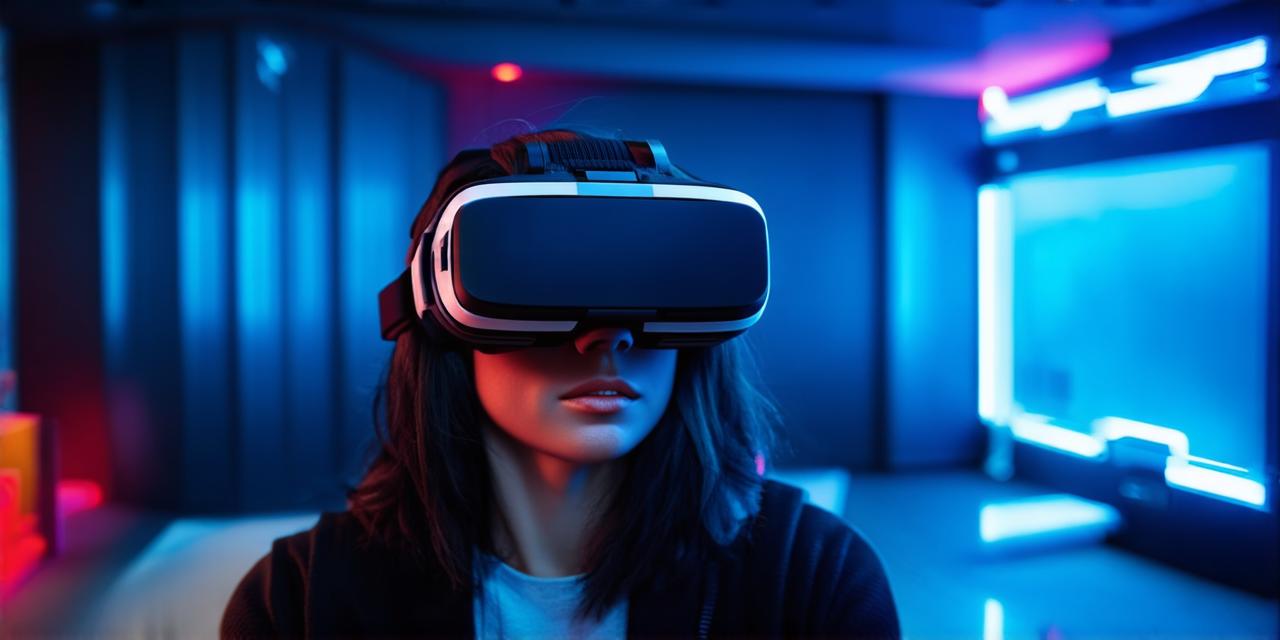Virtual reality (VR) is a rapidly growing technology that allows users to immerse themselves in a digital environment and interact with it in real-time. One of the most popular ways to experience VR is through room-scale systems, which create a large, open space within a room where users can move freely and interact with virtual objects.
The Basics of Room-Scale VR
Room-scale VR systems typically consist of multiple sensors that track the user’s movement within a room. These sensors work together to create an accurate representation of the user’s physical movements, which is then translated into the virtual environment. The result is a seamless and immersive experience that allows users to move freely and interact with virtual objects in real-time.
One of the key advantages of room-scale VR is its ability to create a sense of presence within the virtual environment. By allowing users to physically move through the space, room-scale VR systems can create a more realistic and engaging experience than traditional desktop or mobile VR systems.
Additionally, room-scale VR systems are often used in professional settings such as training, education, and entertainment, where it is important to create a realistic and interactive environment.
The Technology Behind Room-Scale VR
Room-scale VR systems use a combination of sensors and cameras to track the user’s movement within the room. These sensors typically consist of infrared (IR) technology, which uses light to detect the user’s position and movements. IR sensors are often placed around the room at eye level and on walls or ceilings to create an accurate representation of the user’s physical position.
In addition to IR sensors, room-scale VR systems also use cameras to track the user’s movement. These cameras typically consist of high-resolution lenses that can capture detailed images of the user’s body and movements. By combining data from both the sensors and cameras, room-scale VR systems can create a highly accurate representation of the user’s position and movements within the virtual environment.
One of the key challenges in developing room-scale VR technology is ensuring that the system is able to accurately track the user’s movements while also providing a seamless and immersive experience. This requires careful calibration of the sensors and cameras, as well as advanced software algorithms that can interpret the data and translate it into the virtual environment.
Case Studies and Personal Experiences
There are many examples of successful room-scale VR applications in various industries. One such example is the use of room-scale VR systems in medical training. These systems allow medical students to simulate real-world surgical procedures in a safe and controlled environment, which can help improve their skills and reduce the risk of errors during actual surgeries.
Another example is the use of room-scale VR systems in education. These systems can provide students with a highly immersive and interactive learning experience, allowing them to explore complex concepts and ideas in a way that traditional classroom settings cannot. For example, students could use a room-scale VR system to simulate a historical event, allowing them to experience it firsthand and gain a deeper understanding of the event.
Personal experiences with room-scale VR can also provide insight into its potential applications. One user reports that using a room-scale VR system allowed them to better understand complex engineering concepts by being able to physically interact with virtual models of the objects they were studying. Another user reports that using a room-scale VR system in a gaming context allowed them to feel more immersed in the game and provided a more engaging experience than traditional desktop or mobile gaming systems.
Real-Life Examples of Room-Scale VR in Action
<p
